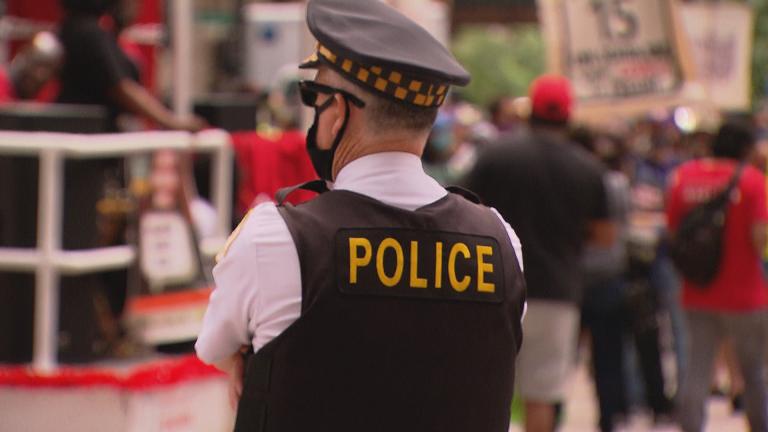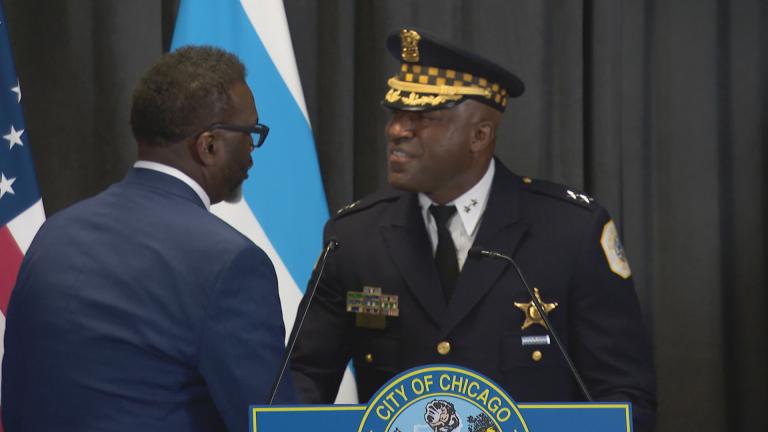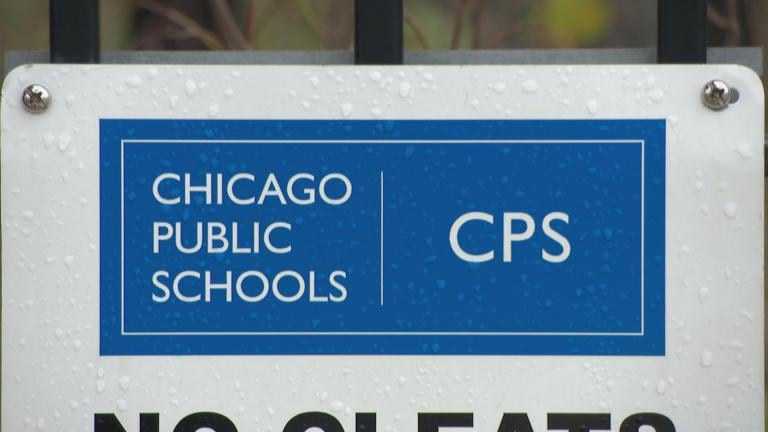Chicago Public Schools students are set to enter their second week of in-person classes. At some high schools, on-campus police officers are part of that experience.
The debate over the role and value of school resource officers, or SROs, is a longstanding one. Supporters believe the officers increase school safety and their presence prevents criminal behavior in schools, while opponents say the officers treat students of color more harshly than their white peers and contribute to the overpolicing of Black and brown communities.
Amundsen High School on Chicago’s North Side voted to remove one of its two SROs. Demetrio Javier, dean of students and athletic director at Amundsen, says the move was not based on concerns about the officers themselves, but a choice on how to spend resources.
“I wouldn’t say we voted to remove one officer,” Javier said. “CPS did a great job of providing a process for us … in which [we] would engage and really look in depth into the SRO program, how it would fit into our school, and they gave us options. In the past, you always had just two officers. Now, however, we were given the option of: keep two officers, keep no officers, or one [officer] and a program. In our in our case, we were able to … make the determination that we can kind of have the best of both worlds in a sense and be able to say we kept one officer and we have now an at-risk coordinator that [can offer] more resources for our students.”
As a Mikva Challenge participant, CPS senior Chance Stegall surveyed other CPS students to gauge their feelings about SROs and help develop a recommendation on the issue.
“We conducted three meetings with youth that attend CPS schools,” Stegall said. “Most of the feedback that I have received in my group … was that the kids felt like they didn’t really have like a strong connection and relationship with the SROs in their school and that the better alternative would be to get more school counselors, a restorative justice program, social workers and possibly a security guard to still have that safety in the school.”
Ultimately, Stegall says the Mikva recommendation was to remove Chicago police officers from CPS high schools entirely. As of Aug. 17, 55 schools have opted to maintain their SROs, and 17 have decided to remove the officers.
CPS parent Dexter Leggin has two children at CPS high schools and is a parent leader with the nonprofit Community Organizing and Family Issues. Leggin says he supports the removal of police from schools, and that improving relationships between Black and brown communities and police should start outside of school.
“Black and brown kids … have such a negative thought towards police,” Leggin said. “If you want to be effective, change that scenario. And I’m not just talking about every now and then for publicity, they have a basketball game. It’s all about relationships. If you want to have a different outlook on the police department, a different outlook on students, CPS, CPD have to learn how to build relationships in communities.”
Javier believes that Amundsen has attained good relationships with their SROs.
“I think it’s important to know that every school community is different,” he said. “The community outside is different. I tend to see police officers, SROs in schools as a way to bridge this divide between students and CPD. There is so much rhetoric out there, so much negativity against police officers. In a school we have a unique perspective and unique ability to be able to change all the negativity that’s out there when it comes to SROs.”
Stegall says that at her former school, Kenwood Academy, the feedback she received from her peers did not indicate that a trusted relationship existed between the school SROs and the student community. She believes that if an SRO must be in a school, a good relationship is crucial.
“What I observed was a lot of distance and kind of like intimidation between the students and the SRO,” Stegall said. “From the people around me, I’ve heard that they kind of feel like they should not be there or like they don’t serve a purpose. So, just trying to build that relationship and get kids to have a connection with the SRO is very important to have if they’re going to be at a school.”







